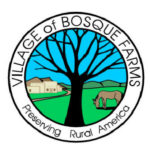“Aren’t you a kill shelter?”
I cringed every time someone asked me that question. I had just started working at a shelter, and at the time all I could say for certain was that no one where I worked wanted to kill animals, that we worked really hard to find them homes and only put down the ones we couldn’t save or who were dangerous.

Colleen Dougherty
That seemed to satisfy most people, but I sensed there was more to it.
First, I learned that the terms “kill” and “no-kill” were misleading. Shelters are either “open admission” or “selective admission,” which means they either take in everything that comes through the door, or they have the option to turn people away if the shelter is full or cannot care for the sick or injured.
Most municipal shelters (run by city or county government) are required to be open admission. Others may choose to be, in service to public safety and animal welfare in general, believing that animals not accepted at the door may be abandoned anyway, or worse.
A hybrid, now called “managed intake” began recently, where you schedule an appointment and pay a fee if they accept your animal — which is not guaranteed. Critics worry this could keep animals in unfit situations, but the theory is that given time to reconsider, some will opt to keep a pet, or re-home it themselves (which, again, is not always the best option for the animal.)
Both managed intake and selective admission shelters may end up referring people to open admission shelters anyway, which sets up the first rather unfair dichotomy in all of this — if a shelter is open admission, it’s bound to end up being called a “kill shelter” even if it’s mission — and it’s staff — would rather not be. In truth, no shelter is ever completely no-kill.
The industry standard requirement at this time is to have at least a 90 percent live release rate of your “healthy and adoptable animals.” This number doesn’t include animals considered dangerous, those gravely ill or injured, “for whom no amount of care will help the pet to lead a happy life,” (Comfort Critters, July 2016,) or those who die on their own at the shelter.
Reaching no-kill status truly “takes a village.” Shelters succeed in communities where funding is given priority; spay/neuter services are available and affordable; and where citizens and lawmakers do not turn a blind eye toward breeding, either through neglect or for profit. They have solid volunteer, foster and transfer programs; strong intake protocols, community animal (feral) programs and, when not hampered by governmental “banker’s hours,” these shelters are able to host events, extend hours and offer extra services.
Sadly, shelters lacking this support are often chastised, when, ironically, they’re the ones needing the most help.
When the no-kill movement began in the mid ’90s, the rift between its proponents and traditional shelters was intense. Amy Heinz (Aheinz57PetRescue&Transport) wrote, “…we have to stop putting each other down and start joining hands.”
By 1994, “Doing Things for Animals” (now Maddie’s Fund) began hosting conferences to get the communication going. These days, “no-kill” may be more of a popularity contest than a humane ideal.
But either way, the first step is understanding what it means and what you need to get there, and honoring every step along the way.
















